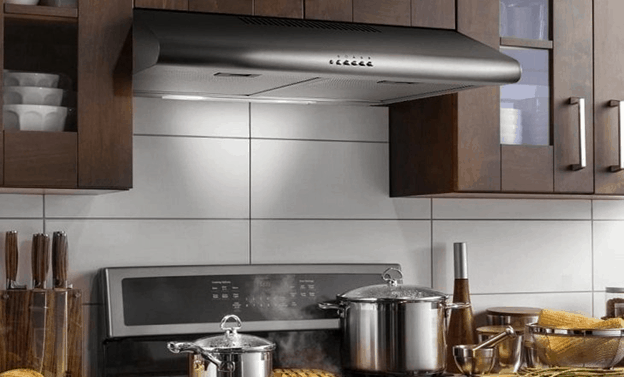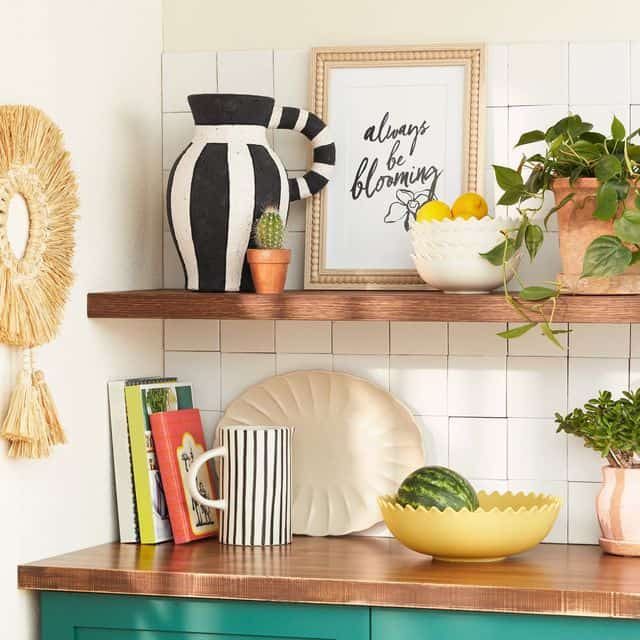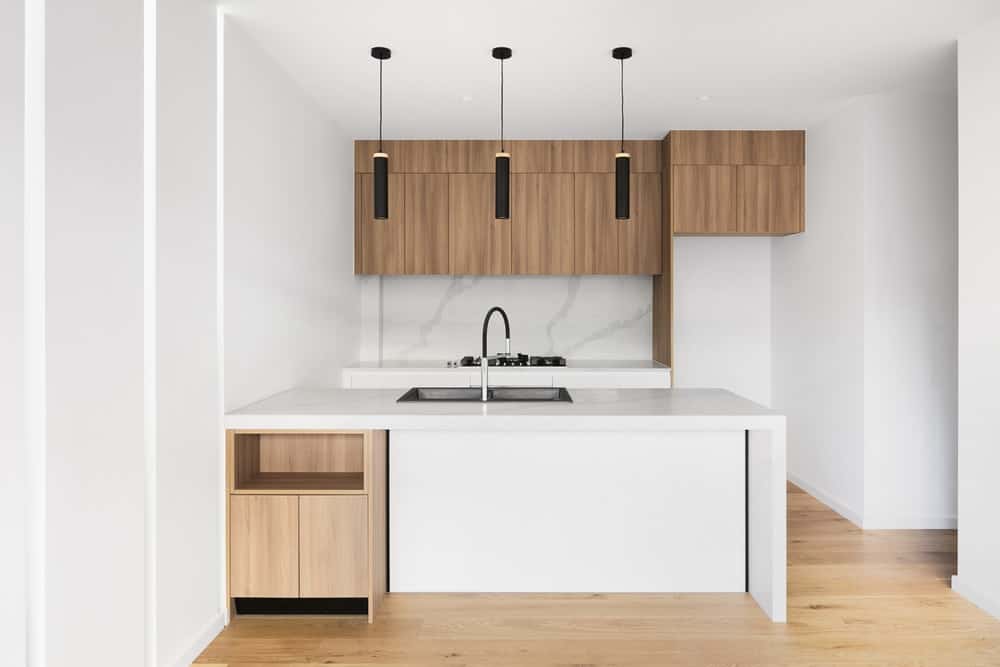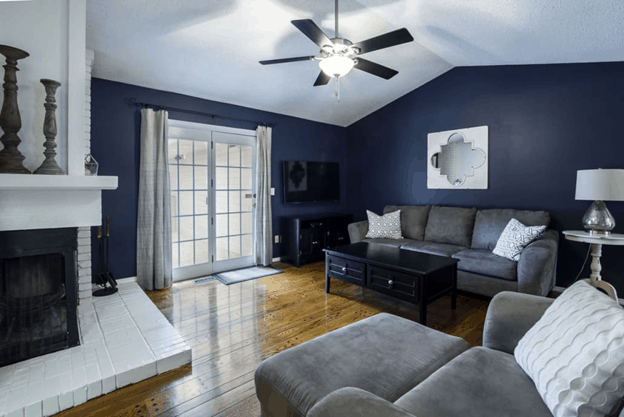Whether you're repainting a wall or refinishing a piece of furniture, you'll have to make a difficult choice. After all, there are various finishes to select from, and determining which wins the satin vs. semi-gloss debate isn't easy.
Both classic oil-based and modern latex paints are available in satin and semi-gloss finishes. In addition, both options are available for paint cans and paint-primer combo cans. Satin and semi-gloss finishes are very popular, and each works best in different contexts.
Fortunately, you can choose the right paint finish for your project by learning what each option offers and why each is ideal. Here's all you need to know about the satin vs. semi-gloss paint finish, what's the difference, and which is ideal.
What is a Satin Finish?
A satin finish has a subtle gloss to it. It's not fully matte because it reflects light a little, but it's also not a tremendously reflective surface. Any light bouncing off the finish is usually barely detectable. The presence of binders usually determines the shine of the paint. The amount of binder to the pigment in less-reflective products is lower.
Satin Finish Product Types
The finishes are available in various products, allowing you to use them for various repainting, refinishing, and finishing applications. Each one has a specific purpose or is best used in specific situations.
Paint, for example, is widely used to impart color and a finish. Sealants and clear coatings, on the other hand, don't normally modify the underlying color of the wood, wall, painted, or stained surface, but they can change the shine.
Examples of Products with a Satin Finish :
- Paint with a satin finish
- Clearcoat with a satin finish
- Spray paint with a satin finish
- Stains with a satin finish
- Varnishes with a satin finish
- Sealants with a satin finish
- Wax for furniture with a satin finish
What are the Advantages of Using Satin Finishes?
- It doesn't have a sticky quality to it as you can easily glide your hand across it.
- Satin paints and finishing products are long-lasting as they outlast most matter finishes in terms of wear and tear.
- You can clean the surface without causing damage with mild cleaners.
- Satin finishes may provide a more accurate color as they don't reflect light. Thus the color of the lighting is less likely to change the appearance of the paint.
- It is referred to as eggshell paint as it mimics the luster and appearance of an eggshell. It is a paint with a low gloss.
- Satin paint will give your painted walls a slight sheen.
- Satin paint gives you a delicate, smooth, and soft wall surface.
- The satin paint finish has a dull shine which is ideal for hiding imperfections and surface faults.
What are the Disadvantages of Satin Finishes?
- A smooth finish will not completely conceal imperfections, such as major dents.
- Touching up satin paint might be tricky as well. If you add additional paint to just a few locations, those spots will usually stick out visually rather than blending in.
- Satin treatments aren't stain-resistant or moisture-resistant. It isn't as strong as gloss paints at providing protection.
Best Applications of Satin Paints:
Satin paint and finishes are best used in high-traffic areas. Locations with many touches and huge expanses. Gloss paints may be too overwhelming in those spaces, so it's a popular choice for living rooms and master bedrooms. Satin paint and finishes work well in children's rooms. The surface is tough and can withstand repeated cleanings, which is important in a child's room.
It works well in hallways and kitchens as well. Those are naturally high-traffic areas. Because the surfaces are more likely to become dirty and hence require cleaning or to be touched frequently, a durable finish is the best option.
What is a Semi-gloss Finish?
The shine of a semi-gloss is slightly higher than that of a satin finish. It isn't particularly reflective, but light does bounce off the surface to the point where it may be seen. Even when employed to cover a huge surface area, it is rarely overwhelming or intrusive.
Use semi-gloss paint in rooms where moisture, drips, and grease stains are common. Because of its high shine, it's a durable paint that can be quickly washed clean of any defects, making it ideal for children's bedrooms, bathrooms, and playrooms.
Examples of Products with a Semi-gloss Finish:
- Clearcoat with a semi-gloss finish
- Spray paint with a semi-gloss finish
- Stains with a semi-gloss finish
- Varnishes with a semi-gloss finish
- Sealants with a semi-gloss finish
- Furniture wax with a semi-gloss finish
What are the Advantages of a Semi-gloss Finish?
- Semi-gloss is usually quite durable and can withstand a lot of scrubbing.
- It's also moisture-resistant, making it suitable for damp areas of the house.
- You can often visually brighten up space by using this wall paint. It bounces light throughout the room because it reflects it. It is a great option for small places with limited light.
- Semi-gloss paint has a higher sheen than satin paint, making it simpler to clean without losing its luster.
- If you have children and need to clean the walls frequently, semi-gloss paint is a better choice.
- Semi-gloss focuses the eye on architectural details more effectively.
- Semi-gloss is more forgiving of pre-existing imperfections than satin.
- Semi-gloss has a high paint sheen; hence it brightens the room.
What are the Disadvantages of Semi-gloss Finishes?
- Don't use semi-gloss paint as it draws attention to imperfections rather than hiding them. If you have a dent in your wall, for example, the reflective coating allows light to bounce off the edges, making it more obvious.
- It can also be a problem if you apply semi-gloss paint and it streaks. It can cause the sheen to be uneven, highlighting the less-than-ideal application.
Best Application of Semi-gloss Paint:
The semi-gloss paint finish is ideal for kitchens and bathrooms since it is moisture-resistant, durable, and robust enough to withstand cleaning. In addition, these finishes are popular for high-touch furniture. These include bookcases and dressers, as well as bathroom and kitchen cabinets, in addition to walls.
It's also a popular finish for home accents like mantels, stair railings, cabinetry, and crown molding because the sheen brings these architectural features to life. When trying to make a dark area appear brighter, the finish also works well with a light color.
It's also a great option for molding and trim. Durability and washability are quite important when it comes to trim. Furthermore, the paint sheen helps it stand out from the background hues and provide aesthetic appeal to the room.
Frequently Asked Questions(FAQs)
1. What is the Difference between Satin vs. Semi-gloss Paint Finishes?
The ingredient mixtures of satin vs. semi-gloss paint are different. Semi-gloss paint has a gloss level of roughly 50% when blended with paint. Because satin paints have a lower gloss percentage than semi-gloss paints, they are less lustrous. The gloss content of satin paint is merely 30%. Although the variation in % may appear minor, satin vs. semi-gloss paint types are very different, as shown in their various properties above.
When it comes to sheer, satin vs. semi-gloss paint is one step different, with semi-gloss being slightly shinier. Depending on the lighting in a room, semi-gloss paint colors may appear slightly different. However, it may provide a level of richness not found in a matte finish.
Semi-gloss is a wonderful option for high-touch areas such as furniture and cabinetry. It is used in kitchens and bathrooms because of its durability and moisture resistance. In addition, the shine is usually not too intense to be distracting, so it's a great choice when you need to lighten up a room or want to emphasize trim subtly.
If you're worried about imperfections, satin paint is usually a better choice. Because it reflects less light, imperfections are less obvious. Furthermore, it may be best suited to larger rooms where too much gleam could be overbearing.
2. What Causes an Uneven Wall after Painting?
Painting yourself saves money and gives you the ornamental effect you want. If your walls have streaks, splotches, lines, or inconsistent color, you'll need to learn more about surface preparation, painting supplies, and application processes to save your job. Investing the time to learn some of the skills and techniques utilized by professional painters will help you achieve professional-level results.
3. How to Choose the Right Paint?
Step down at least one sheen level on the sheen scale if your paint color is dark and rich, as you don't want a highly shiny finish. Because the darker and richer a paint color is, the more colorant, it contains, the higher the gloss. It's the same if you're painting a large, sun-bleached, or uneven wall. The higher the shine, the more imperfections are visible. Sheen increases the price, usually by a dollar or two per gallon as you progress up the sheen scale.
Takeaway
It all comes down to knowing where you'll be using the paint and the style you want to achieve. Satin absorbs more light and covers imperfections on the surface of the wall. Semi-gloss reflects more light, giving the impression of a larger space. Semi-gloss paint also lasts longer.
















